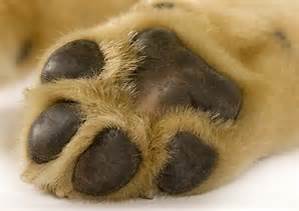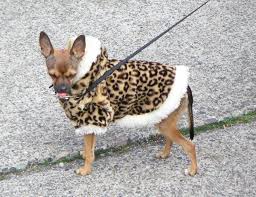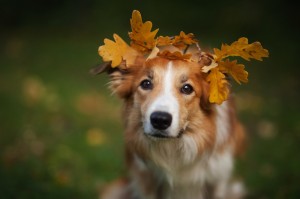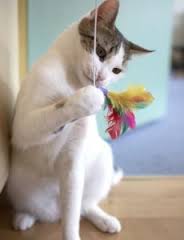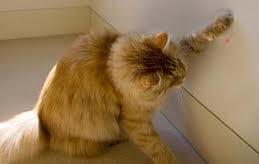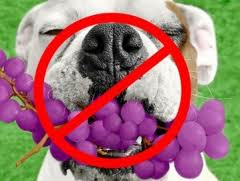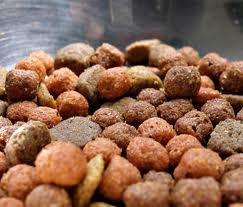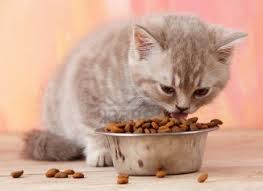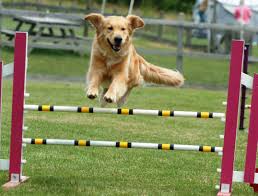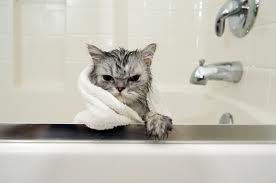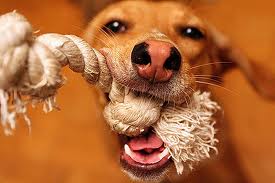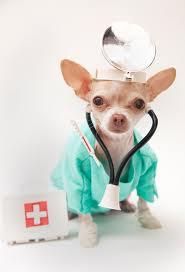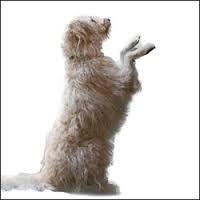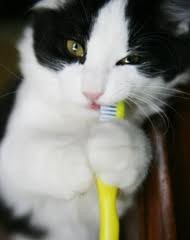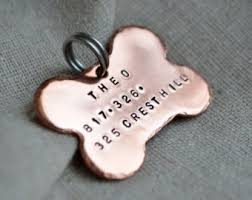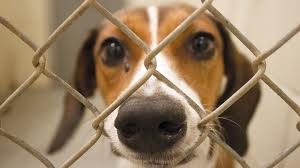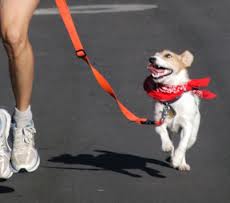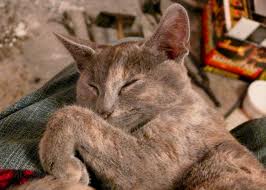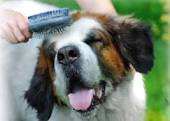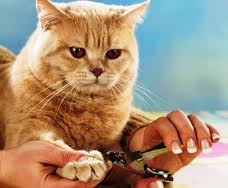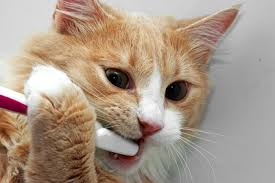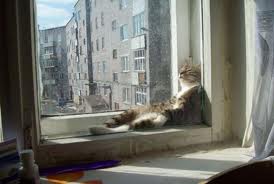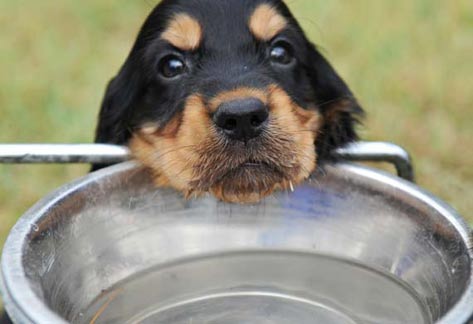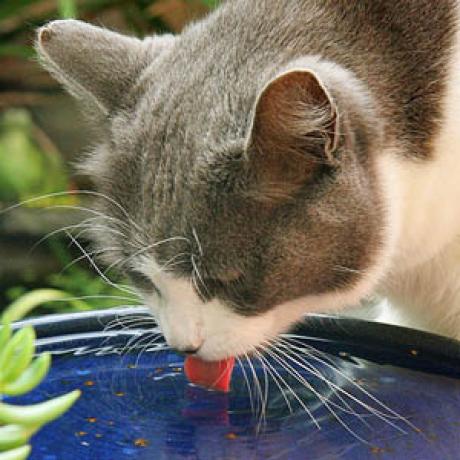Archive for the ‘Pet Health’ Category
Dog Food: The Good, The Bad and The Ugly
Dog Food: The Good, The Bad and The Ugly
The Good (On Dog Food):
Yes you have had a dog for years and think you know it all! And you may know a lot about dog food, but even if you do (and of course for those that don’t), it’s always a good refresher.
(1) Stick to protein rich dog food, which result in more energy for your dog, less health problems.
(2) Also give your dog only human grade dog food. Most dog foods are classified as “feed” which means its made up of meat from dead, dying, and diseased animals. Yuck!
(3) The least processed the better. Canned and kibble go through such extreme processing to make them shelf stable. It’s much easier to absorb nutrients, and there are more nutrients in foods that are less processed.
The Bad (On Dog Food):
(1) Stay away from wheat & processed grains.
(2) Be weary of dog food that is made up of “meal.” If the word “meal” comes after a mean on the ingredients list of your dog food then its not real meat, its a by product which can also contain feathers, grease and whatever else is lying around.
(3) Stay clear of preservatives, which most commercial brands use to extend the shelf life of their dog food. Some preservatives used double as pesticides- they are not even permitted in the UK, but the good old US of A allows them of course!
(4) Don’t feed table scraps! No need, and nothing good will come from it (unless you like a fat begging dog at your tableside, j/k, well not really!). Also remember never ever feed your dog: chocolate, onions, grapes, raisins, bones and macadamia nuts.
The Ugly (On Dog Food):
The FDA doesn’t control what manufacturers are putting in our pet’s food! So we must ourselves be very diligent, because as you know the saying ‘what we eat is what we are’ goes for dogs too! And you don’t want your dog to be a sick animal.
Side Notes:
(1) Wash your dog food bowl regularly, whether you give him dry, wet or raw, and water bowl for that matter. If you wouldn’t eat off of the same plate every meal why should he? (Hopefully I’m not assuming too much! LOL)
(2) Feed your dog the correct portions of food, read labels, talk to your vet. You are not helping your dog by over feeding him!
(3) Keep your dog hydrated- they need a lot of water! To help your dog drink more, wash his water bowl daily, and give fresh water at least with every meal!
Final Thoughts:
I think my dog eats better than me (actually I know he eats better than me) but that makes me happy knowing that he will live his longest healthiest life that I can give him. Yes it’s hard to resist that cute face begging you for some food off your plate, but just remind yourself you would rather have your dog live a long healthy life (than a fat beggar), if so then just give him a hug and a pat instead, or better yet, play a game of fetch with him after you eat!
Here’s a great source to check out. You can look up the brand of dog food you are feeding your pup, and see if its worthy enough! Dog Food Advisor
Are Raw Diets Good for your Pets?
My Valentino has a very sensitive stomach, and a couple of years ago, he had chronic diarrhea for over a a year- poor thing! During that time, I tried every food (meaning all healthy kibbles), vet RX food, just about everything, and nothing worked until I found raw. At first, I’ll admit, I wasn’t a fan because its expensive, its gross and it requires more work than just dumping some kibble in his bowl. But, as anyone who knows me, knows I would do anything for my dog, so I tried it – and his chronic diarrhea went away, his itchiness went away, his coat is always shinny, and people cant believe he’ll be 7 years old because he’s in such amazing shape!
Feeding a whole, raw food diet has been associated with:
Increased energy
Healthier skin and the elimination of itchy skin conditions
Shinier fur with less shedding
Healthier teeth, gums, and better breath
Firmer muscle tone with increased strength and mobility
Healthy digestion and smaller, firmer stools
Stronger immune system
Better weight management
Raw food is also believed to help mitigate and prevent:
Cancer
Diabetes
Kidney and liver disease
Heart disease
Pancreatic disease
Autoimmune disease
Cats and dogs are natural carnivores. They have long, sharp teeth designed for meat eating, and their digestive tract is much shorter and secretes enzymes that enable them to safely consume raw meat. Their stomach acids are so much stronger than ours that they tend to kill off almost all pathogenic bacteria anyway. Raw food is high in protein and the natural nutrients that your pet needs.
Most processed kibble and canned pet foods are the equivalent of junk food for your pet. The intensive manufacturing processes create an inferior and biologically inappropriate product that is low in nutritional value and lacks vital food enzymes. Feeding these foods can lead to a negative effect on our pet’s health. Raw, whole ingredients will support and optimize a healthy immune system and wellness.
If you do the switch, don’t be alarmed when your dog poops a lot less, and it’s much smaller in size- this is supposed to happen because the food he is eating is high quality and its being used instead of excreted.
Why not give it a try! There’s plenty of brands out there to make it easier than figuring it out on your own, and in the long run, you will save money on your pet’s medical bills, good luck!
Tips to Protect Your Pups Paws in the Winter Months!
Winter can be tough, especially on your dog’s paws! Take some steps to ensure overall health for one of your dog’s most important assets- his paws!
(1) Simple! Just check your dog’s paws regularly- meaning daily. Inspect for abnormalities, scraps, cuts, injuries. Press down on the pads to see your dog’s response. Check between their pads for lumps, cuts, or discoloration as well.
(2) Trim your dog’s hair between its paw pads- in order to keep the snow and ice from sticking to it and causing frostbite!
(3) Toughen up your dog’s paws by walking your dog on cement of pavement regularly.
(4) Moisturize your dog’s paws to prevent cuts, cracking or peeling. Bag Balm made especially for pets is a favorite to use and works wonders- just massage it in!
(5) Use paw wax to add a layer of protection on your dog’s paws especially when its snowy, icy and salty outside!Musher’s Secret paw wax is a favorite, but you can also get away with vaseline or something of that type.
(6) To melt the snow, use Safe Paw Ice Melter, instead of other salts. It will not irritate the pets paws.
(7) For serious protection consider using dog shoes or reusable rubber dog booties, or just socks. I have all of the above, and since my dog Valentino is very active the shoes tend to slip off sometimes. But if your dog is very sensitive to the cold/ice/salt and the Mushers doesn’t cut it, I would try it out! Take your dog over to the store with you to try them on, so you know you are buying the right size, and can even get pointers how to put them on.
(8) Wash/wipe your dog’s paws after going outside especially to get the salt off their paws!
Enjoy the tips, and try to enjoy the winter months with your pups!
BEWARE: High Rise Syndrome
When summer comes around, many pet parents eagerly open windows to enjoy the weather. Unfortunately, they are also unknowingly putting their pets at risk. Unscreened or unsecured windows pose a real danger to cats (and some dogs too!), which fall out of them so often that the veterinary profession has a name for the complaint: high-rise syndrome.
FACTS:
(1) Cats have excellent survival instincts, and most cats fall accidentally from windows etc.
(2) Cats have an incredible ability to focus their attention on whatever interested them- like a bird etc- which can cause distraction, and may loose their balance and fall.
(3) Because cats have little fear of heights, pet owners assume they can take care of themselves. But just because cats have claws and can cling to some things, they cant cling to all things, such as concrete, brick or window ledges.
(4) When cats fall from higher places, they don’t land squarely on their feet, instead they can land splayed apart, which can cause head and pelvis injuries.
(5) Its a misconception that cat’s wont be injured if they fall from one or two story buildings, because these short distances may not give them enough time to adjust their body posture.
PREVENT HIGH RISE SYNDROME:
(1) Install snug and sturdy screens in all windows.
(2) If windows have adjustable screens, make sure they are tightly wedged into window frames.
(3) Note that cats can slip though childproof window guards. These don’t provide adequate protection!
Spring Tips for Your Pup!
Spring is in the air! Just some quick reminders because we know you love your dog, and we do too!
(1) Sticks are a NO-NO! Have your dog play with a frisbee or tennis ball instead. Sticks can splinter, and can cause choking and severe injuries to your pup!
(2) Before getting new spring plants, check THIS SITE out to make sure you are not poisoning your pup!
(3) Use pet-friendly products for spring cleaning! Make sure your products are dog-safe, and also keep them in a cabinet your dog cannot get to- you never know!
(4) Start flea and tick prevention if you haven’t already!
(5) Watch for signs of seasonal allergies. Some dogs develop allergies to common seasonal plants, and most dogs react with skin problems. Talk to your vet professional regarding any symptoms your dog may be experiencing.
Why Is It Dangerous To Leave Your Dog’s Collar On While In The Crate
Your dog’s crate should be his or her’s safe haven- a place to relax, a place to sleep, a place of comfort and safety. Unfortunately, there have been stories about dogs accidentally strangling themselves in their crates while their owners are not home. It is such a tragedy, and one that can be avoided, so please please please adhere to these safety tips!
COLLARS
A dog’s collar could get caught on the latches or the bars of the crate. When my Valentino was a puppy, he figured out how to escape the crate (and not through the door!!) And a lot of dogs will try to do this. Well if he had a collar on, he could have gotten it stuck while trying to escape. If they do get stuck, they panic and try to get themselves free which usually only makes it worse, and they can end up injured or strangle themselves 🙁
TAGS AND HOOKS
Tags and hooks can also catch up on the bars or the doors of the crate- which is another reason why you should remove your dogs collar before he or she is put in the crate.
CHEWING
Some dogs out of boredom, will try to chew on their collar while in the crate. Not only is this expensive to buy a new collar, if your dog swallows part of the collar, this may require expensive surgery too! Also do not leave your dogs collar on top of the crate (esp. with wire crates), because the dog may be tempted to reach it, and pull it into the crate to chew on it.
SCRATCHING
Another thing that can happen is your dog can scratch at its collar, to try to get it off, and hurt himself in the process, by either scratching the skin raw, or getting its leg caught in the collar itself.
Treat your puppy as a toddler, and take all precautions!
Getting a Kitten? Read these Nutrition Tips!
 Kitten’s nutritional needs differ greatly from an adult cat’s requirements. After all, that little ball of fluff may double her weight during the first few weeks in her new home. And your new little kitten, will need extra energy for playtime!! Also, don’t forget to get your new kitten to the vet as soon as you can for his or her’s first check up!
Kitten’s nutritional needs differ greatly from an adult cat’s requirements. After all, that little ball of fluff may double her weight during the first few weeks in her new home. And your new little kitten, will need extra energy for playtime!! Also, don’t forget to get your new kitten to the vet as soon as you can for his or her’s first check up!
WHAT KITTENS NEED
All cats, kittens included, have similar needs for fat, most vitamins and some fatty acids. But when it comes to protein, a growing kitten needs more that an adult cat, along with more minerals, amino acids, and some essential vitamins. Thirty percent of a kitten’s energy source should come from the protein source in his or her food. Your vet may have recommendations for a nutritious kitten food. Also this is a great website for information on nutrition- http://bestcatfoodadvisor.net/.
NOT JUST ONCE A DAY
You know how active kittens are, so you have to make arrangements for your kitten to eat 3 to 4 meals a day. One meal a day cannot supply a full day’s energy store for a kitten, with all the playing, racing, chasing, pouncing and stalking that takes place!
Don’t forget unlimited access to clean, fresh water 24/7. The water bowl needs to be checked frequently, as bowls can tip. Just because there was water in the morning, doesn’t mean there will be water left in the afternoon!
Fall Tips to Keep Your Pet Safe :)
Help keep your pet safe this Fall by keeping in mind these tips!
(1) Dogs can get the flu too! If you see a dog coughing, keep your dog away. Before going into a dog park, check out all the dogs first, to see if you notice any symptoms of a sick dog. If your dog does develop a cough, contact your vet!
(2) Holiday stress can affect your pets too! Lots of unfamiliar faces and loud talking can stress your pet out. Exercise your dog beforehand and give him a special chew toy to keep him distracted. If he still seems stressed, put him in a quiet room away from all of the commotion. Be sure cats have access to a quiet room where they will probably hide all on their own 🙂 For other small caged pets, transfer their cage to a quiet area too. If you are getting ready for a trip, try to remain calm and keep your anxiety down (your pets can sense your stress). Also, try to pack where your pet cannot see the suitcase, some pets get stressed out as soon as they see you packing!
(3) Keep pests out! As the weather gets colder, rats and mice may decide that your house would be a great place to stay warm and dry. Be mindful of how you prevent these pests from entering your house. To keep them out, close up any entry holes and choose anti-rodent products that are non-toxic. Rodenticides are extremely toxic to dogs and cats and other small pets, so it is best to discuss a safe control plan with a professional exterminator and your vet.
(4) Keep school supplies like markers, pencils, glue sticks away from your pets and off the floor- they can be toxic if ingested!
(5) Snakes can get grumpy as they are preparing to hibernate and don’t take kindly to being disturbed by curious pets. To protect your pets from venomous snake bites, know which snakes are poisonous and where they usually hibernate. Walk your dog on a leash away from those areas.
(6) Mushrooms that pop up in your field can make your pet sick if they eat them. A few of the mushrooms are actually deadly, so if you know your pet has eaten one go to your vet ASAP.
(7) Just like people, your pets can have seasonal allergies too! Symptons are sneezing, itchy skin, ear infections and watery eyes. Call your vet if you think your pet has allergies to discuss testing and a treatment plan.
(8) Car coolants are highly toxic to pets. Clean up any spills immediately, keep any coolant out of reach of pets, and dispose of used coolant. You can also switch to a propylene glycolic-based coolant- while it isn’t completely non-toxic, it is significantly less toxic than the other engine coolants.
HAPPY FALL!!
What To Avoid In Your Pet’s Food
Be an advocate for your pets! Don’t just buy pet food and/or treats because it’s convenient- most pet foods and treats sold at the grocery store can contain some harmful ingredients. Support your local specialized pet stores! (Most of them in the Hoboken/JC area will deliver too!)
Of course, foods that are healthier for your pets, will be more expensive, just like with humans, but it should lead to a longer, healthier life for your pet, and hopefully lower your vet bills!
Here’s what to AVOID:
- BHA, BHT ethoxyquin, propylene glycol, and sodium selenite (these are dangerous chemicals)
- Meat, Meat-Meal, and Meat-By-Products (these are unspecified protein sources)
- Corn, Whey, Soy and Beat Pulp (unhealthy grains and fibers- def. great to avoid if your pet needs to shed some pounds too!)
- Products from China and Rendering Plants (poorly regulated)
Take 2 minutes of your day today, to check the ingredient labels on all your pet food/treat products, and make sure none of the above are present. If so, switch your pet to a better food, but make sure to do it gradually, or else your dog may get an upset stomach.
You should also talk to your vet about your pet food choices, but make sure they are not just pushing the food they sell.
And lastly, of course if your pet is on a special/medicated diet, please talk to your vet if you would like to switch foods.
Sweater or No Sweater??
I myself have about 10 different coats/sweaters for my dog Valentino, but I know some people tease me about this, and don’t see a need- saying, well he already has a coat on, his fur!
If Valentino was a breed of dog that was acclimated to cold weather, like Huskys and Malamutes are, I would certainly not put a coat on him. It’s not that I simply enjoy putting clothes on my dog, I certainly feel the opposite actually- its one more step, that I don’t want to do, but I do. WHY? Because Valentino has a thin body type, and very short fur, with some of his skin even exposed. Also a big sign is that his whole body shakes when it is cold outside.
So a good general rule of thumb is, if you have:
(1) Small dog;
(2) Elderly dog or chronically ill (such as arthritis);
(3) Breed with thin body type, especially those with short fur;
Then I would purchase a coat or sweater for your pup!
These 3 types of dogs have more difficulty generating and retaining enough body heat on their own. Also, if you are keeping your heat down in your house/apartment during the day, you might think of keeping a sweater on your pup inside as well.
Even if your dog doesn’t need a coat, it certainly won’t hurt him! I also put a light rain coat on my dog when its raining even if its not cold, so there is less clean up when I get home! And when its snowing, its also good to invest in a pair of booties for your pup to protect their sensitive paw pads from the salt and chemicals used for de-icing.
Final rule of thumb – get a coat that compliments your dog’s coat and coloring 😉
Autumn Safety Tips
I love the fall!! There isnothing like crisp, cool air, the first months of school and luscious foliage to get you excited for the changing seasons. Your pet, too, is probably welcoming the break from hot, sticky weather. But pet parents, beware—fall is also a time of lurking dangers for our furry friends. Here are some things to look out for!
(1) The use of rodenticides increases in the fall as rodents seek shelter from the cooler temperatures by attempting to move indoors. Rodenticides are highly toxic to pets—if ingested, the results could be fatal. If you must use these products, do so with extreme caution and put them in places inaccessible to your pets.
(2) It’s back-to-school time, and those of you with young children know that means stocking up on fun items like glue sticks, pencils and magic markers. These items are considered “low toxicity” to pets, which means they’re unlikely to cause serious problems unless large amounts are ingested. However, since gastrointestinal upset and blockages certainly are possible, be sure your children keep their school supplies out of paw’s reach.
(3) Fall and spring and are mushroom seasons. While 99% of mushrooms have little or no toxicity, the 1% that are highly toxic can cause life-threatening problems in pets. Unfortunately, most of the highly toxic mushrooms are difficult to distinguish from the nontoxic ones, so the best way to keep pets from ingesting poisonous mushrooms is to keep them away from areas where any mushrooms are growing. Contact your veterinarian or the ASPCA Animal Poison Control Center immediately if you witness your pet eating a wild mushroom.
(4) In order to generate body heat, pets who exercise heavily outdoors, or who live outdoors, should be given more food during colder seasons. Make sure horses and other outdoor animals have access to clean, fresh water that is not frozen.
(5) Many people choose fall as the time to change their car’s engine coolant. Ethylene glycol-based coolants are highly toxic, so spills should be cleaned up immediately. Consider switching to propylene glycol-based coolants—though they aren’t completely nontoxic, they are much less toxic than other engine coolants.
(from the ASPCA.org)
Are You Feeding Your Dog Something Potentially Deadly?
Watching Dr. Oz recently, reminded me of this additive/chemical in our pet’s food (and in our food!) that has been linked to certain types of tumors in laboratory animals, according to the National Institute of Health.
The evil culprit is BHA (and also BTA).
Despite findings that this chemical may be linked to cancer, the FDA still permits its use as a fat preserver in food, and generally recognizes it as safe in low doses; however, who knows what “low doses” means and why even take the chance??? Moreover, we tend to feed our dogs the same food (and treats) day after day (unlike our own diets), so the accumulative exposure is worrisome.
There are a ton of other dog food and treats (and cat food/treats) that don’t use these additives in their products. Natural preservatives are considered safer, so most dog food companies avoid the use of these chemicals.
So 2 lessons learned here!
(1) READ your pet food labels, and ingredients list!
(2) When you read on a pet food label a particular fat ingredient has been “preserved with BHA” you know to stay away!
SAME GOES FOR CATS!!
Best Games for Cats!
Your cat is playful, curious and a hunter, and he wants to interact with you to show off his natural skills. Playing games with your cat is a great way to entertain him, as well as give him some extra exercise.
Cats love to chase and hunt, so it’s natural from him to want to exhibit these behaviors for you. Many cats, if given the chance to go outdoors, will actively hunt for birds and other small animals.
These hunting and chasing skills can be replicated in games that you play with your cat. Many cat toys that you’ll find in the store focus on the game of the hunt, and allow you to play along with your cat- like a feather, or a little mouse hanging from a string, or a ball that circles around a container – and most of the time just a box and a little catnip mouse keeps my cats happy and occupied.
Another great option for a game to play with your cat involves a laser. Your cat will be transfixed by the red laser light and try to catch it. This game can keep your cat occupied for a while and also provides exercise.
Also, playing on your bed, with your hand under the covers (to protect yourself) moving it back and forth, will entice your cat as well, and bring out the inner hunter or huntress!
If your cat loves treats, you can purchase toys that you can hide treats in, too.
It is very important to keep your cat engaged in games that are both enjoyable and a good source of exercise. Your cat will make it known if he is bored, and walk away from you or the toy. Your cat may be bored with one activity but another one might continue to entertain him. Mixing up the games and toys will help keep your cat happy.
Did You Know….(important for dog owners)
That Even A SMALL Amount of Grapes Or Raisins Can Be Deadly For Your Dog If Ingested!
Grape and Raisin Toxicity in Dogs (from PetMd.com)
Grape and raisin toxicity is well documented in dogs.
Dogs of any age, breed, or gender may be affected. One of the most serious complications of grape/raisin toxicity is acute (sudden) kidney failure with lack of urine production (anuria). However, kidney failure is not seen in all dogs after ingestion of grapes or raisins, and again, the reason why some dogs are affected excessively while others are not is still being studied.
Symptoms and Types
- Vomiting and/or diarrhea – often within a few hours; after 24 hours of ingestion vomit and fecal contents may contain pieces of grapes or raisin
- Loss of appetite
- Lethargy, weakness, unusual quietness
- Abdominal pain
- Dehydration
- Oliguria (passing only a small amount of urine)
- Anuria (complete cessation of urine)
- Kidney (renal) failure and death
Seek Immediate Treatment
This is an emergency needing immediate treatment. If you are positive that your dog ingested grapes or raisins, call your vet immediately. They will probably tell you to come in right away, and in the mean time they might tell you to induce vomiting as soon as possible, before the toxins in the fruit can be absorbed.
Prevention
Make sure all family members are aware of all the toxic foods for dogs ( including raisins, grapes, onions, chocolate, garlic, currants, macadamia nuts, human medications, fatty foods, alcohol, unbaked bread dough, candy, xylitol, etc.) Keep all of these foods out of your dog’s reach, and also monitor children very carefully if/when they are eating any of these foods.
Tip for Tuesday: 3/25/14- Keep your Pet Healthy!
Take 2 minutes out of your day to better your pup’s life! Go to http://www.dogfoodadvisor.com/ , enter the brand of dog food you are using into the search field, and check to make sure you are feeding your dog a top quality food!
For cats, check out this site!http://www.petsadviser.com/cat-food-advisor/
Winter Fun for Dogs!
Winter Fun for Dogs!
As a dog owner myself, I know how agonizing these brutal winter months can be with an energetic dog. Also, I’m very familiar with that guilty feeling because you are not stimulating your dog as much as when it’s warmer out- running with, biking with, playing with, eating with at outdoor restaurants, drinking with at Pier 13 — or just taking that extra long walk along the waterfront because it’s so beautiful outside.
Hopefully, some of these suggestions can help provide some relief to you and your pup during this extremely cold winter season!
GO SOMEWHERE NEW
When a client asks us to walk their dog on the same path everyday, we usually ask the client if we can switch it up instead, and here is the reason why: going new places, or just going on a different route offers the excitement and mental stimulation of new sights and smells, in addition to exercise.
I am definitely guilty myself of walking Valentino on the same path often, however I notice that when I do walk him on a different street, he gets really excited for the new scents (more so than I would have thought!). Or you could also get in your car and drive to a new dog park. I like Brookdale in Montclair because it’s bigger than any dog park in Hoboken, and its not too far if you have a car.
TEACH SOMETHING NEW
Did you know that mental exercise tires a dog more quickly and thoroughly than physical exercise? So teach your dog a new trick each week! Can your dog balance a treat on his nose? Shake a paw? Roll over? Crawl along the floor? Jump through a hoop? Play dead? Retrieve? Pick a new trick, and start training! Don’t forget that consistency is very important when training. Teaching your pup a new trick will also enhance the bond between you and your dog. And if you teach them a trick that also relates to obedience training- leave it, off, down – well, ever better!
Don’t underestimate your pup! Dogs love learning, love the challenge, love pleasing their owners, and of course love the treats that come as a reward! There are so many tricks you can teach your pup, I can’t even count how many Valentino knows. Also, you can teach them words alone. A dog can learn more than 100 words, close to 200. Valentino has been practicing the names of his stuffed animals. It sounds silly but they really do enjoying learning – “Bring Tigger!”
GIVE YOUR DOG A BONE OR A FOOD DISPENSING TOY
Chewing is healthy for dogs, and helps them relieve stress as well. Food dispensing toys are invaluable boredom busters. While rubber Kongs are great toys and can be stuffed with a great variety of treats and tasties, there are many other options on the market now — check out your local pet store!
Valentino’s new favorite chew toy is an antler, or a marrowbone.
KIBBLE HUNT
If you place your dog’s kibble in a food bowl, chances are the bowl is empty within 15 seconds and the dog gazes up at you upon finishing as if to say, “is that it?” You can put that food to work for you by making your dog hunt for it with his nose. Instead of dumping the food in his bowl, consider crating him, or putting him in another room, while you hide small piles of food in the house then release him to “kibble hunt.” Initially, make the piles very easy to find. As your dog gets better at this game, practice hiding the food in more difficult spots.
I actually use small treats when I play this game with Valentino. This is one of his favorites!
HIDE AND SEEK
Hide and seek is a great way to exercise your dog’s mind and body and recall skills. You can do this alone or with your friends or family. Hide (or take turns hiding if there is more than 1 person playing) throughout the house, calling the dog to you, and rewarding her generously with treats or maybe a game of tug once your pup finds you. If you are playing with more than 1 person, when the treats are finished, say “all done!” which is the cue for the next person to call him.
When I pay this game with Valentino, I start in easy hiding spots, and then make them progressively harder. I put him in a room that I am not going to hide in, say “STAY” close the door almost all the way, so he cant cheat and peek, and then once I’m hidden I say “COME FIND ME!” If he is stumped I give him hints, by calling out his name so he can follow my voice.
DO SOMETHING OLD WITH A NEW TWIST
Turn your dog’s favorite game into a training game! For every throw of the toy, ask your dog for some obedience behavior or trick as you hold the toy. As soon as your dog performs, give him some praise, then send your dog after his toy. Dogs adore this game, once they understand how it works. For working breeds, it also gives them a fun, satisfying outlet for their built-in drive to work with you.
After I started playing this game, Valentino eventually started throwing all his tricks my way- to try to guess which one I wanted!
ARRANGE A PLAY DATE
Dogs benefit from social interaction outside their family unit. If your dog gets along well with other dogs, find some time to get together with a friend or relative and their dog. The great thing about a play date is that it doesn’t have to be outside in the frigid cold, it can be inside your homes.
When I introduce my dog, or any dog for that matter to a new dog especially in a home type environment, I always make sure to pick up all the dog toys first. Take any potential items they can fight over out of the picture at first (including food, food bowls), then you can slowly introduce toys etc into the picture. If you do not know someone with a dog you can arrange a date with, you can always call Whiskers and Leo Pet Care to walk or run your dog!
Have fun with the games!
One last thing before you leave…..please read this article titled “Your Dog is Not a Human Being- Stop treating Her Like One.” Trust me, every dog owner should read this!! The title sounds harsh, especially for us dog fanatics, like myself, but it’s truly great advice, and adds to my blog post about keeping your pup occupied mentally and physically!
http://theweek.com/articles/536712/dog-human-being-stop-treating-like
Top 10 New Year’s Resolutions for Your Pet (And YOU!)
(1) Measure your pet’s food every time, don’t just guess.
(2) Choose an age appropriate diet taking into account their activity level.
(3) Try a new activity with your pet, whether its taking a class with your dog (Val and I do agility at Kellar’s Canine Academy, and he LOVES it!), or buying a new cat toy that your cats love (Leo & Mya loves the cat nip cigars from Yeowww Catnip).
(4) Groom your pet daily! It doesn’t have to be a long session, anything counts!
(5) Add more playtime into your pet routine.
6) Schedule a check up with your vet.
Make it Your Mission, To Get Your Pet In Top Shape This Year!
A recent survey indicates over 50 percent of America’s pet population is overweight or obese. It’s an epidemic now!
To get your pet healthy, or keep your pet healthy and at an optimal weight, food/nutrition & exercise are KEY!
FIRST STEP: DIET & THE RIGHT FOOD!
Very simply put, if your pet is overweight it is taking in (eating) more calories than it needs. Set all excuses aside … excessive weight in an otherwise healthy pet is a direct result of consuming unnecessary amounts of food. Of course, before starting down this course, consult your vet to make sure your pet doesn’t have any metabolic disorders.
When it comes to diet, feed your pet a high quality food, so he gets the nutrients he needs to keep healthy and full! It’s that easy. Don’t feed your pet the equivalent of McDonalds every day (Purina, Beneful, Alpo, Kibbles & Bits, etc) because its cheaper, and easier to purchase (at the grocery store). Spend a little more money and time, and later on down the road, your pet should have fewer medical issues, which means your wallet will suffer less too!
Let’s examine some excuses when it comes to your dog’s feeding habits. Whether your dog is a good weight or overweight, these 4 points are good to note!
DO ANY OF THESE SOUND LIKE YOU?? (cats are more of an issue, and overweight issues with cats need to be discussed with a vet)
(1) “But she hardly eats a thing.” This is probably a case where you feed your dog table food, so she is getting calories from that, and choosing not to eat her own food. Stop the people food- it’s unwanted calories!
(2) “My pup won’t keep quiet unless she gets her treats. And she won’t go to sleep at night until she gets her little dish of ice cream.” Congrats, your pet has trained you! Your pet has discovered that the more noise and fussing it produces the more likely it is to be rewarded for this behavior. The owner finally “gives in” to keep the pet quiet and the pet sees the food as a reward. In effect the owner is creating a “beggar” by rewarding his/her behavior. You need to break this habit immediately, and re-train, reward for being good and quiet.
(3) “She’s such a good dog we don’t want her to go hungry.” This dog became overweight because the owner’s signal of affection for their pet has focused on feeding. It is an understandable trait but unfortunately for the dog it can be a case of too much of a good thing. The owners’ method of showing affection should be directed more toward physical activity than feeding. Think “FETCH” and “TUG” not “FOOD”!
(4) “She just refuses to eat dog food.” In this case the dog has trained the owners to feed him/her such things as chicken, liver, ice cream, cookies, etc. This dog has been given a choice of what to eat and has chosen certain people food. The dog usually overeats because s/he isn’t getting a proper balance of nutrition, plus everything tastes so good there is a reward factor in eating. The solution is … you choose, not your pet. Leave down the dog food, and don’t worry if she doesn’t eat it right away, she won’t starve herself. A dog can go without food for 5 days before you have to worry (as long as she is in relatively good health and not diabetic).
SECOND STEP: THE RIGHT AMOUNT OF EXERCISE
Exercise is beneficial for your pets in so many ways- it helps decrease stress, improve sleeping habits, maintain or loose weight, and you know the old saying- A TIRED DOG IS A GOOD DOG!
The type and amount of exercise needed can differ greatly with breed, age and energy level of your pet. However, it is important to choose the right type of exercise for your pet with the help of a veterinarian if your pet is overweight. With their assistance you should be able to bring your pet back to their optimal weight. Arthritis, diabetes, cardiovascular problems are just some of the issues your pet will deal with if he or she is overweight. According to the Association for Pet Obesity Prevention, it may even decrease their life expectancy by up to 2.5 years. So if it is so bad as to affect our pet’s health, how are we letting it happen?
Exercise is important for all pets, overweight or not!
Whiskers and Leo does offer dog walking and dog running if you need extra help exercising your dog! As for cats, cats need daily exercise too, but more in the form of play. We do offer cat visits if your feline needs some extra attention and play!
How to Help Stop the Winter Itch!!
 Winter weather is tough on your skin and hair, so don’t forget its the same for your pup, so he or she needs the same kind of protection.
Winter weather is tough on your skin and hair, so don’t forget its the same for your pup, so he or she needs the same kind of protection.
If your dog is already itching, you need to break him or her from that habit because it can cause open sores and possible infections. A great daily supplement for this, and for all dogs, is Omega 3- it will help revitalize your dog’s skin and coat and keep it healthy. Of course always talk to your vet first.
I get compliments on my dog’s coat a lot, and I always say it’s the Omega 3 supplements and of course healthy dog food too!
Winter Tips for Your Kitty
With the cold temperatures, we need to make sure your kitties stay warm and safe!
1) If your cat is outdoor/indoor, make sure he or she is acclimated and doesn’t stay out too long, especially when it’s below freezing.
2) Watch for signs of frostbite- ears, tails, footpads and look for pale, glossy or white skin.
3) Cats like to curl up in warm places. Prevent potential burns and fires by protecting your cat from open fireplaces, wood stoves and space heaters. Warm engines are also a favorite place for outdoor cats, and feral cats too, so honk the horn or bang on the hood before starting the car.
4) Antifreeze has a sweet taste cats like but it’s toxic enough to cause serious illness and even death. Make sure your car isn’t leaking any fluids and keep containers safely locked away.
5) Feed your kitty a nutritionally complete food and always have water out for him or her. Nutrition and water are important because a well-nourished pet is better equipped to cope with harsh weather.
6) Give your cat a cozy place to sleep by offering some bedding in a warm place, free from drafts. You can raise your bed off the floor, too, cats love that jungle lair feeling.
7) Contact your vet immediately if you notice changes in your cat’s behavior, such as energy-level or appetite-decrease.
Get Rid of Pet Hair in Your Home!
No matter how much you clean or vacuum, there is always more hair!! Especially in the holiday season, you want to keep the hair to a minimum because you don’t want it ending up in your Thanksgiving dinner!
With 3 pets, pet hair is always a challenge, but keep these tips in mind, and you will be stressing less about hair being on all your clothes and in your casserole!
1- Brush your pet on a daily basis. This will reduce the amount of hair you find around your home! I like the furminator.
2- Make sure you pets get plenty of exercise, because healthy bodies promote healthy coats!
3- Feed your pet a good quality pet food- it will keep their coat healthy and soft and reduce shedding.
4- Don’t let your pet eat fat. Overweight pets have difficulty cleaning and grooming themselves.
5- Keep your pets out of your closets!
Nail Clipping
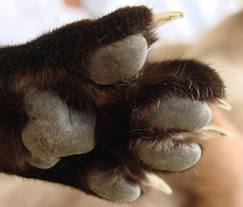 I do clip all of my pets nails myself, so I guess I’m lucky to have pretty good pets, but it’s also a lot of patience and practice! My vet cannot even clip my one cat’s nails, the infamous Leo. He is already so nervous when going to the vet, so he is on high alert, and then after being poked and prodded he is NOT in a good mood. I guess he is a moody cat to begin with anyway, so you can imagine! But I did learn to clip his nails at home, where is he stress-free and more relaxed.
I do clip all of my pets nails myself, so I guess I’m lucky to have pretty good pets, but it’s also a lot of patience and practice! My vet cannot even clip my one cat’s nails, the infamous Leo. He is already so nervous when going to the vet, so he is on high alert, and then after being poked and prodded he is NOT in a good mood. I guess he is a moody cat to begin with anyway, so you can imagine! But I did learn to clip his nails at home, where is he stress-free and more relaxed.
Here are some pointers!
1) Having extra hands is always easier, so if you can have someone help you, the faster the process will be.
2) When your cat is relaxed is the best time, so maybe clip them after a meal. And clip them in a quiet room with no other pets around.
3) First make friends with the paws. Take your cat’s paws between your finger, and press so the nail extends out, then release and give her a treat. Do this once a day, one nail a day, until you’ve done it with all 10.
4) Never cut to the quick. The pink part of the cat’s nail, called the quick, is where the nerves and blood vessels are. Do NOT cut this sensitive area. I always err with caution and cut less, instead of getting really close to the quick; cutting the quick is very painful for your cat. If you do cut it by accident, you can stop the bleeding with a styptic powder or stick.

5) When its time to clip, lay your cat in your lap facing away from you (or if you have someone helping you, in their lap). Take one of her toes in your hand, massage and press the pad until the nail extends. Check to see how much of a trim her nails need and notice where the quick begins. Now trim only the sharp tip of one nail, release your cat’s toe and quickly give her a treat. If your cat didn’t notice, clip another nail, but don’t trim more than two claws in one sitting until your cat is comfortable. Be sure to reward her with a special treat afterward. Please note, you may want to do just one paw at a time for the first couple of sessions.
6) Every two weeks is a good schedule for nail clipping.
7) If you are nervous, or it’s hard to tell where your cat’s quicks are on her nails, you can ask your vet or groomer for help.
What not to do!
1) If your cat resists, don’t raise your voice or punish her.
2) Never attempt to clip when your cat is already agitated.
3) Don’t rush the clipping.
4) Don’t try to trim all your cat’s nails at once in the beginning. I still never clip Leo’s nails all at once, its too stressful for him, but Mya I can because she is much more laid back.
5) If you can help it, I would not declaw your cat. It involves amputation and is really painful.
Good luck!
Tip for Tuesday (or maybe Wednesday :) ) BAD BREATH!
Dental issues are a big item in pets, especially seniors. When you go to check on your pet, sniff the ears and check out the mouth. Look for any sign of bleeding gums, tartar buildup or bad breath. If you can’t see a pet’s back teeth because they just look like a big brown row, that’s an indication of massive tartar buildup. It is no longer acceptable to just chalk it up to “Old Age.” Also remember that any time a pet has bad breath or bleeding gums from a tartar buildup, that pet is swallowing all of the bacteria and germs into their organs, and any type of gingivitis or oral infection can take a toll on a pet’s internal organs.
There have been many advances in anesthesia so that pets can have their teeth cleaned no matter what age. Did you know that one of the most common diseases in dogs and cats is periodontal disease?!
So smell your pet’s breath today, and schedule a check up to see if he or she needs a cleaning!
16 Top Household Hazards for Cats
I know as a cat owner you think you have thought of it all, but it’s better to be safe than sorry!
(1) Human medications. Never leave pills on the counter because I have seen/heard of cats eating them, despite the fact that they are NOT tasty!
(2) Insecticides. One of the most common incidents, involved the misuse of flea and tick medication such as applying the wrong ones to the wrong animals.
(3) People Food. Keep your cats away from grapes, raisins, chocolate, xylitol, avocado, gum…
(4) Plants. Click here to get a complete list.
(5) Pet Medications. Make sure they are properly dispensed.
(6) Rodenticides. Don’t use them in your homes – cats can get into most tight places.
(7) Household Cleaners.
(8) Heavy Metal Paint Chips.
(9) Garden Products. Watch out for cocoa mulch and fertilizer.
(10) Chemical Hazards. Watch out for anti-freeze, pool chemicals, paint thinners & drain cleaners.
(11) Thread, Dental Floss, Tinsel. Cats love string so watch out!
(12) Mini Blinds. Cats/kittens can easily hand themselves if they get caught in the cords!
(13) Treated Toilet Water. I have stopped using the toilet bowl tabs that clean your toilet automatically because even cats sometimes drink out of toilet bowls; they are very agile!
(14) Rubber Bands.
(15) Plastic Bags.
(16) Windows/Screens. An open window can pose a threat to a cat, even if it has a screen on it. I would’t open your windows too far. Screens can break!
How Much Water Does Your Pet Need?
Most household pets do NOT drink enough water!! This can cause health problems. But do you know why your pets might not be drinking enough water?
On the average, a dog should drink 1/2 to 1 ounce of water per pound of body weight each day; whereas cats require 2-4 ounces of water daily.
Water is essential for all life; without water, organs do not function properly. Having a constant supply of fresh water is crucial to your pet’s health. Water is the most important nutrient in your pet’s body, besides oxygen. Many pet owners think their pet is getting enough water because they leave a bowl of water for them, but they can be mistaken.
Follow these suggestions to increase your pet’s water intake, and make sure your pet stays hydrated:
1) Clean and disinfect your pet’s water bowl at least once a day.
2) It is best to change the water in your pet’s bowl three times a day, but at the very least, once a day. The fresher the water, the more appealing it is to your pet to drink!
3) Pets prefer cool water over warm water.
4) Wet food can provide another source of water to your pet. If you are just feeding your pet dry food, they will require more water. On the average, dry food has 10% water content, and wet food has 80% water content!
5) A pet fountain is a great way to help your pet drink more. It circulates the water, keeping it cool and cleans out impurities as well.
6) If you are exercising your pet, he will require more water, so don’t forget to bring some water along for the ride!
7) In the summertime, your pet will require more water.
To check your pet’s hydration level, pick up a loose piece of skin by the shoulder blades, and release it. If it falls back into place quickly, then your pet should be hydrated. If not, this can be a sign that your pet is dehydrated. In any case, if you are worried about dehydration, always contact your vet!
The Overweight Cat
Stop denying your cat is not overweight! Chances are that he or she probably is….and if you have 2 cats, the chances are even greater that at least 1 of them is overweight!
Obesity is a common problem in pets, even in cats! I myself have 2 cats, one might be considered a little overweight, so I need to start paying closer attention to these pointers as well!
I think we tend to forget or not think about our pet’s health in the same way we think about our own. Being overweight has the same effects on pets that it does on people- it can cause stress on the body, and increase their risk of diabetes, liver problems and joint pains.
Things to keep in mind!
(1) It is much easier to keep your pet from gaining weight, then to try to get your pet to loose weight.
(2) To test if your pet is overweight, see if you can feel the backbone and palpate the ribs. If you cannot feel your pet’s ribs without pressing, there is too much fat. In addition, you should see a noticeable “waist” between the back of the rib cage and the hips when looking at your pet from above.
(3) Talk to your vet to determine your pet’s caloric requirements, selet a suitable food and calculate how much to feed.
(4) Increase physical activity of your pet- more play sessions!
(5) Find the hidden calories- are you giving your pet too many treats? They count too!
(6) If you get that guilty feeling when your pet looks at you for food/treats, then you are probably doing what I do, and give in, and give them what they want! If this is the case maybe you should feed your pet several small meals throughout the day, instead of 1 larger meal.
(7) Don’t leave food down all day for grazing.
(8) Provide non-food related attention. If your pet comes up to you and demands food like mine does, instead of food, get out their favorite toy and have a play session. Or you can even try to teach your pet a new trick! Yes, even cats can learn, I’v done it!
One of Most Common Dog Dangers

One of the most common dog dangers that people don’t think about, that probably almost everyone has in their house is….. XYLITOL.
What is xylitol? Xylitol is a type of artificial sweetener found in many sugar-free chewing gums, candies and baked goods. In dogs, it can cause a sudden drop in blood sugar. They symptoms of this dangerous condition include depression, lethargy, weakness, incoordination and seizures in some cases.
Xylitol poisoning can occur in as little as 30 minutes after ingestion. Thats a big problem when you consider that dogs are so darn good about getting into things, and can do it before we even notice them. Also another problem is, sometimes when dogs get into things, they clean up (eat) the evidence too, i.e. the wrappers!
These kinds of things do happen, so please be careful. It is safest not to give your dog any human foods. But I do give my pup carrots and the occasional peanut butter in his kong 🙂
Tips for Bathing!!
Has your dog gone without a bath for too long, because the process is daunting to you??

When should you bathe your dog? Whenever he starts to SMELL like a dog! Or about once a month for the average dog I would say. You don’t want to bathe too much because then his skin will dry out.
Here are some tips!
1) Start bathing your dog regularly at a young age to get him use to the process. Puppies should be at least 4 weeks old before their first bath. I have been bathing Valentino since I got him a 10 weeks, once a month, and he is very use to it now- still hates it- but he will stand in the shower and let me wash him. I even taught him not to shake until I’m out of the shower!
2) If bathing inside, make sure your house is warm, also do your prep work before hand- like getting shampoo and towels ready to go. Also is you are bathing in the tub (or a slippery shower), make sure there you have a non-stick matt, or else your dog will slide all over and get scared, and possibly hurt himself
3) Start by combing out any matts if your dog has long hair. Otherwise the water turns the matts into hard masses. If your dog’s hair is matted with a sticky material, trim with clippers or soak the area with mineral oil for 24 hours. (Or consult a professional groomer for difficult matting).
4) Prep your dog. You can put cotton in their ears to prevent water from dripping in. I do not do this, because im afraid of the cotton slipping down the ear canal, but if the cotton is large enough it wont slip.
5) Bathe your dog as quickly as possible to make the process less annoying for both of you. Be thorough and do a good cleaning. Make sure you get out ALL the soap or else his coat with itch, and you’ll have to do the whole process again. Dry your dog immediately. Use a good pet chamois, lots of big soft towels, or a hair dryer set to a low setting, not too hot. Or use all 3 like I do!
Good luck!

5 Easy Things You Can Do Right Now To Keep Your Dog Safe
(1) Do NOT give your dog bones, like chicken or turkey bones. They can break easily and their sharp edges can make your dog sick. Just because your dog begs for something with that cute face, doesn’t mean you should give in!
(2) Do NOT feed your dog table scraps, they could be poisonous. Also, it is just a really good rule to have, because then your dog will have manners when you have company over, and won’t be a beggar!
(3) Only feed your dog, dog-specific treats.
(4) Check recalls on dog foods, treats and products.
(5) Pick treats that fit your dog’s size. Treats that are too big or too small can get caught in your dog’s mouth or esophagus.
What to Feed Your Cat???
Following my blog post last week about what to feed your dog, this week we will talk about your cute feline friend!
Similar to a dog’s diet, ingredients matter too for cats!!
INGREDIENTS ARE KEY
Feeding your cat proper nutritious food is one of the most important things you can do as a cat owner. Think beyond the grocery store cat food. Some good brands to buy are: Wellness, Weruva, Best Feline Friend, Natural Balance, Innova, Nature’s Variety, Orijen, & California Natural. These are just some examples of high quality food. If you are feeding your cat a brand that is not listed, just take a look at the ingredient list. Ingredients that should be high on the list are: some sort of protein (meat, fish, poultry, not just “meat product”), Taurine, vitamins, minerals, fatty acids, enzymes and water. Fillers such as corn, rice and wheat should be limited. Ingredients to avoid are: by-products, bone meal, added sugars, BHA, BHT, corn meal and excessive carbohydrate fillers.
WATCH OUT!
Avoid giving your kitty the following:
(1) Canned tuna too often can lead to malnutrition
(2) Milk
(3) Alcohol
(4) Raw eggs
(5) Yeast dough
(6) Onions, garlic
(7) Grapes/Raisins
(8) Chocolate
(9) Coffee/Tea
(10) Candy or gum
VARIETY IS IMPORTANT
Add variety to your cat’s diet. I would feed a combination of wet and dry food. Wet food is important because the water content is high and a lot of cats don’t drink water regularly so this added source of hydration is great. Also, alternating food choices may provide your cat with a more balanced diet.
AGE DOES MATTER
Also, make sure your cat is getting the proper food for his or her age, either kitten, adult or senior food. I would buy food for your kitten that is specifically labeled for “kittens.” However, make sure once your cat reaches adulthood to change food types (read the directions on the bag of food). A lot of adult cats, especially overweight cats should be on weight control food because they are not as active anymore. In addition, senior cats are usually more sedentary and should be on low fat diets, or on foods labeled specifically for seniors.
CAN I FEED MY CAT DOG FOOD? cat2 
Keeping your cat away from your dog’s food is a good idea. Cats need a lot more protein in their diet, so feeding your cat strictly dog food will create a nutritional deficiency.
And of course, none of the advice we give, trumps the advice from your vet, about your pet’s specific diet! We advise everyone to talk to their vet about their pet’s nutritional needs. 🙂
What to Feed Your Dog???
That old saying YOU ARE WHAT YOU EAT, applies to your pets too!
Maybe you are getting a new dog and are wondering what to feed him or her, maybe your dog has been on the same food for years, or maybe you are thinking of switching your dog’s food.
If any of these sound like you, then read on!
Many people do not know that pet food packaging contains ingredients just like human food does. What you see on that label is the key to knowing whether that food is appropriate for your pet. Make note, that the higher the ingredient is on the list, the more it makes up that food. Most of your pet’s food will be composed of the first few ingreidents, which is important to know in case you see any undesireable ingredients.
Here are some ingredients to avoid:
(1) By-products & by-product meals: These are unfit for human consumption so don’t feed them to your dog. They are created from waste parts in the butchering process. Instead look for dog food that lists actual meat as an ingredient. And note that “chicken meal” is not the same terrible ingredient as “chicken by-product meal.”
(2) Anything artificial (like colors and flavors, such as FD&C Red #40): Many pet foods use artificial colors and flavors. These synthetic additives are unnecessary, especially since color has little importance for your dog.
(3) Fillers (such as soybean meal and flour, wheat middlings, wheat gluten and corn meal gluten): Fillers have little to no nutritional value and are only added to pet food to increase volume or weight. Almost all dog food is sold by weight, so bulking up food with inexpensive ingredients can save companies a lot of money. The issue is that your pet gets absolutely nothing from these ingredients, and in most cases their body can’t even break them down.
(4) Sugar or sweeteners (such as cane sugar, or HFCS): Just because your dog LOVES the food, doesn’t mean it’s healthy! We all know that what tastes good isn’t always what is good for us.
Here’s a great website to check out the food you are feeding your dog: http://www.dogfoodadvisor.com/
What to feed your cat is next week!
Puppy Proofing Your House & Life!
Here are some good tips about Puppy Proofing your home & life!
- Confine your puppy to a small area inside and keep doors and windows securely closed and locked. Or better yet, keep your puppy in a crate when you are not home!
- Never leave your puppy unsupervised, whether inside or outside, they are bound to get in trouble!
- Keep your puppy off balconies, high decks and upper porches.
- Keep all cleaning supplies secured in a locked cabinet or out of the puppy’s reach- I have seen them open cabinets before!
- Remove poisonous houseplans or place them out of reach. To see list, go to …….
- Keep toilet lids down.
- Cut six-pack beverage holders apart before discarding in case your puupy gets in the garbage or finds it.
- Unplug, remove or cover any electrical cords.
- Do not use an electric blanket or heating pad to line your puppy’s bed. This could cause serious burns.
- Keep all medications out of your puppy’s reach.
- Make it a habit to “Puppy Check” before closing doors or leaving home to make sure your puppy has not been accidentally locked in an unsafe area.
- Keep sewing supplies and small hardware out of puppy’s reach. Buttons, beads, needles, pins, nails, staples screws, etc., can hurt your puppy’s mouth and cause internal injuries if he swallos them.
- Do not put ribbons around your puppy’s neck, it could catch on something or choke him.
- Make sure all candy, alcohol and chocolate are out of puppy’s reach.
- Keep anti-freeze out of puppy’s reach- its tempting because of its sweet taste.
- Deter your puppy from drinking outside puddles in the street or sidewalks or at dog parks- they could contain pesticides, chemicals or other harmful stuff.
National Pet Dental Month is Now!
February is National Pet Dental Month. The American Veterinarians Medical Association is working to educate and promote dental health to pet owners. It is estimated that about 1 in 10 pet owners make sure their pet’s teeth are cared for and brush them on a regular basis.
Like us, cats and dogs need regular care of their teeth and gums. They can get plaque buildup, tartar, periodontal disease, and sometimes red, swollen gums and need treatment. Oral infections can sometimes also lead to other health problems and could cause problems in the kidneys and liver.
How can you improve your pet’s health?
The American Veterinary Medical Association urges all pet owners to bring their pet to the vet for yearly checkups.
You can also brush your pet’s teeth. There are toothpastes for dogs and cats that are easy to use and you don’t have to brush for 2 minutes like our dentists recommend, just as long as you can run the toothpaste around their teeth . Even just brushing a few times a week, would be very helpful to your pet’s dental health.
What if it is impossible to brush my pet’s teeth?
My cats tolerate having their teeth brushed but as they’ve gotten older they have taken to hiding when they see the toothpaste on the counter. If your pets are like mine, there are other things you can do to cut down on tartar and plaque buildup. There are treats that contain ingredients and are shaped in ways that help breakdown and prevent plaque buildup. Special treats like dental chews, dental bones, and other products are made specifically for promoting good dental health, such as greenies. There are also dental sprays; I’m not sure how useful they are, but they sure help with bad breath!
Chances are your vet is offering a deal for February for dental exams and cleaning. I just made my first appointment for my cats to get their teeth cleaned, and next year I will get my pup’s teeth cleaned. Talk to your vet about your options for maintaining a dental plan and what types of brushes and toothpaste are safe for your pets. Preventative care is always better and cheaper and your pet will be happier in the end.
Tip for Tuesday 1/15/13: How Often Should You Brush Your Dog’s Teeth
Oral hygiene is essential to your dog’s overall health. Oral disease is very common in pets. In fact, the American Veterinary Dental Society reports that by the age of three, oral disease is present in up to 80 percent of dogs. You can significantly reduce your dog’s risk of getting oral disease by establishing a healthy oral-care routine early in your pet’s life.
According to the American Veterinary Medical Association (AVMA), a dog’s teeth should be brushed daily; however, because many dogs initially resist daily brushing, most people don’t do it that often (if at all). But experts say some form of regular brushing is better than no dental care at all. Brushing at least every other day is enough to prevent the buildup of tartar on your dog’s teeth.
When brushing your dog’s teeth, it’s very important not to use human toothpaste. It can make your dog sick and even poison him. You want to be sure to use a pet-friendly toothpaste and a toothbrush that’s sized to fit your dog’s mouth.
Get brushing!!
Winterize Your Pets!
WINTERIZE YOUR PET!
Snow tires? Check! Storm windows? Check! Winter coat? Check! But what about your pets, are they ready for the cold winter months? Here are a few things you can do to keep your pet warm, healthy and safe all season long!
WARM HIM UP!
You might laugh when you see a Chihuahua wearing a miniature coat, but there are practical justifications for a coat that keeps your animal warm, especially for small dogs. Small breeds have a high ratio of body surface to body weight, so they lose body heat more quickly than larger dogs. However, larger dogs too can benefit from an extra layer if they spend a lot of time outdoors in the winter, especially if their coat is not too thick.
KEEP HIM DRY.
As much as you hate getting caught in a rainstorm, getting soaked can actually be worse for pets. Their coats retain water, so the impact of the cold and dampness is greater, increasing their risk of hypothermia. Protect your pet with a rain coat!
SOOTHE HIS SKIN
If your pet’s skin becomes red or itchy from the cold, some vets recommend washing the area with a gentle soap and applying a triple antibiotic ointment. For a cracked nose, try a healing balm formulated for pets or A&D ointment, which you can buy at the drug store, that was recommend by my vet.
IMPROVE HIS VISIBILITY
Reflective gear is a safety essential for walks at night or in snowy, rainy or foggy weather- it helps drivers spot your animal if he bounds into traffic. You can also get a winter coat that has reflective strips on it. Reflective gear is even great for cats! If your pet, cat or dog, sneaks out the front door, a reflective collar will alert drivers to his presence, and also help you better find him! Make sure with cats, the collar is a break-away collar.
PROTECT HIS PAWS
When you tug on your snow boots, do the same for your pup if it’s icy out. Pets can suffer frostbite, and the salt or chemicals commonly spread on streets to melt snow can irritate your dog’s paws.
Are You Keeping Your Pet Healthy!!??
Many people don’t realize how important it is for your pet to get plenty of clean, fresh water. Studies have shown that getting your pet to drink more water is one of the easiest ways to maintain good health. However, many animals, do not drink enough water.
Do you ever notice your cat likes to drink from the faucet, or your dog likes to drink out of the toilet bowl? There is a reason behind this strange behavior!
In nature, moving water is cleaner. It has less bacteria than stagnant water. In addition, moving water is more aerated, so it tastes better, and makes the water more appealing to drink. Running water also is naturally filtered. So for these reasons, pets may seek running water or water that is constantly refreshed (like the toilet bowl) over water sitting in a bowl.
My cats LOVE drinking out of my bathtub. So I leave the water on a trickle for them multiple times a day. I have also heard that cats like when their water source is separate from their food source, so you can try moving their water bowl, or leaving another bowl of water out for them in a different place. Other people love water fountains for their cats and/or dogs. I am personally not a fan. I have tried many, and I always end up returning them. But to each their own!
For my dog, I just use a water bowl, and refresh it multiple times a day. Also make sure you actually wash and scrub out your pet’s water bowls with soap once a day. People frequently tend to forget to do this. Even water bowls can get bacteria growth.
Whatever you choose, just make sure your pet has access to clean, fresh water, and he or she will be healthier!
10 MOST IMPORTANT THINGS TO DO WITH YOUR KITTEN
1. Socialize your kitten. A cat’s personality is a unique blend of inherited traits and early experience. Make sure he gets plenty of contact with people and a stimulating home environment.
2. Train your kitten. It builds a strong relationship between the two of you. Some cats are more trainable that others, but all are capable of learning such behaviors as sit and come, and using a scratch post.
3. Set limits. This means rewarding him when you see him doing things you like- such as scratching on his post, and re-directing him when he does things you don’t like.
4. Kitten-proof your home. Look up, look down and all around to find all the things they could conceivably get into or get hurt by.
5. Play with your kitten. Don’t underestimate your cat’s need for interactive play and exercise.
6. Teach your kitten not to use his teeth and claws on people. Find an acceptable substitute like a laser pointer, feather toy etc. Don’t let people play with your kitten with their hands, so the kitten thinks your hand is a toy, i.e. allowed to bite or use his claws.
7. Leave your kitten’s claws alone unless you have no other choice. Declawing involves removing some of the bones of the toes as well as the claws. If you give your cat plenty of things to claw at and play with, you shouldn’t have a problem!
8. Put collars and tags on, and microchip your kitten too. If you use a collar, make sure it is a breakaway collar. So many pets get lost every year, and no one ever thinks it will happen to them!
9. Alter your kitten. Spaying and neutering improves a kitten’s chances for good health.
10. Buy pet health insurance. Many pets lives have been saved thanks to pet health insurance.
Tip for Tuesday 7/10/12: How To Find A Lost Pet!
From the ASPCA.
It’s every pet parent’s nightmare: Your beloved dog or cat has gotten loose, and you don’t know where he or she is. Don’t panic—there are many steps you can take to locate your little one. Swift action, coupled with major neighborhood networking, will increase the odds of having your furry friend back in your arms! The key is to get the information out to as many people and places as you can, so enlist the help of friends and make sure to involve your entire family in the search effort.
IDs, Please It’s a good idea for all of your animal companions—even indoors-only pets—to always wear a collar with an ID tag. The ID tag should have your name and a current phone number. If you’ve chosen to microchip your pet as a means of permanent identification, keep in mind that microchips are only as good as the information provided to the chip’s company. If you’ve moved or changed your phone number since registering your pet’s chip and forgot to submit an update, please do so as soon as you can.
Hide and Seek
As soon as you notice that your pet is missing, talk to your family members or housemates and ask when they last saw your pet. It’s a good idea to search your home carefully—under beds, in closets, dark places, small places, behind bulky furniture—in case your pet may be hiding or sleeping somewhere. Shaking a food dish, treat jar or favorite toy will sometimes lure animals out of a hiding place.
If you are sure your pet is not in or around the home, take a slow ride or walk around the neighborhood. Ask friends or neighbors if they’ve seen your animal companion; be sure to bring along a recent photo to show them. Check under porches and shrubs, and ask neighbors to check in sheds and garages just in case your pet was accidentally locked in.
Work the Phones
Your first calls should be to all the animal control agencies, shelters (both municipal and private) and rescue groups in your area; one of them could have your pet in custody already. Check in with the bigger shelters daily—and pay your visits in person, if possible.
If there are no shelters close to your home, contact the police.
News Flash
Your next task? Creating a “lost pet” flyer. We recommend sticking with one design, as repeated viewings of a consistent message are more likely to stick in people’s minds. You’ll need to include a lot of info on your flyer, so use your limited space wisely:
– Start with a big, bold headline that people can read from a distance: “LOST DOG” or “MISSING CAT” is fine.
– Under the headline, a photo of your pet would be ideal. Make sure he’s still well-represented after the picture’s been photocopied or printed. List his breed, sex, color, age, weight, distinguishing features, and where and when he was last seen. It is very important that your pet is described accurately.
– Provide your name and two phone numbers; yours, of course, and a friend or family member’s in case you cannot be reached.
Blanket the Neighborhood
With your flyers in hand (and hopefully, a crew of supportive helpers), it’s time to hit the streets. Good places to post your flyers may include:
– Dog runs and parks
– Pet supply stores and pet grooming shops
– Veterinary offices
– Various commercial establishments, such as grocery and convenience stores, gas stations, Laundromats, bars, cafes and restaurants.
– Lampposts and trees. Cover extra heavily the areas where you think your pet was lost, as well as busy commercial and pedestrian sections of your town.
– Around schools, at kids’-eye level. Children can be more observant than adults, especially when it comes to animals.
Note, be sure to ask permission before posting your flyers!
Hit the ‘Net
The Internet was made for networking. Send descriptive emails about your lost pet to your local friends, colleagues and family members, and ask them to pass on the info to anyone they can. Post messages to animal forums and message boards run by groups based in your area—lots of parks and dog runs have online communities. Dont forget Facebook too! If you live in Staten ISland, hit up silive.com the pet forum.
Don’t Give Up!
This one’s important! And remember that many lost animals have found their way back home.
Pets and Cataracts
|
You might be familiar with cataracts as an eye problem that affects many older adults. One thing that many people don’t know, however, is that cataracts aren’t exclusive to humans. Did you know dogs and cats are susceptible to cataracts too? Read this article which provides general information about dogs and cataracts, and also explains how cataracts affect your dog and what you can do to treat them. Go to: http://www.petplace.com/dogs/cataracts-in-dogs/page1.aspx.
This article talks about cats and cataracts. Go to http://www.petplace.com/cats/cataracts-in-cats/page1.aspx. One important thing to consider is that heredity is not the only factor for cataracts, so even if your pet’s history is cataract-free they could still be at risk. Any sort of eye trauma can lead to cataracts, so it is always important to see a vet if your dog or cat has an injury to his or her eyes.
|





